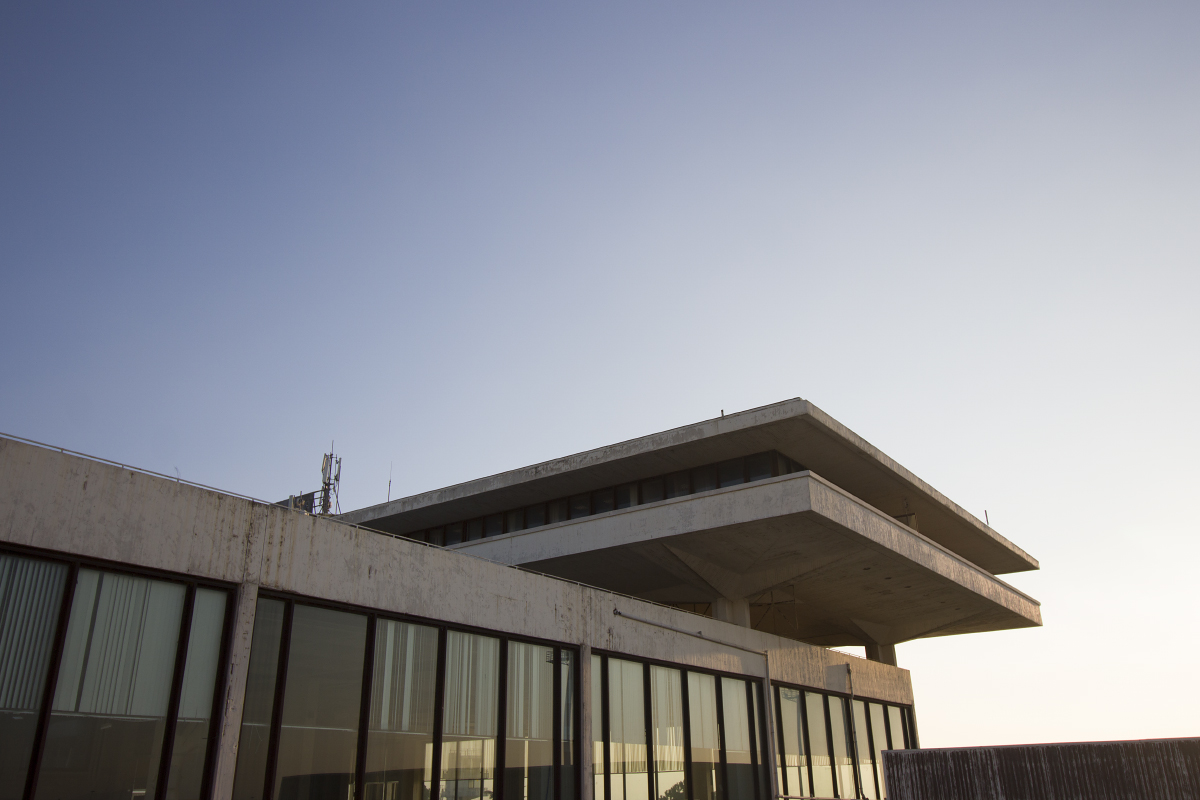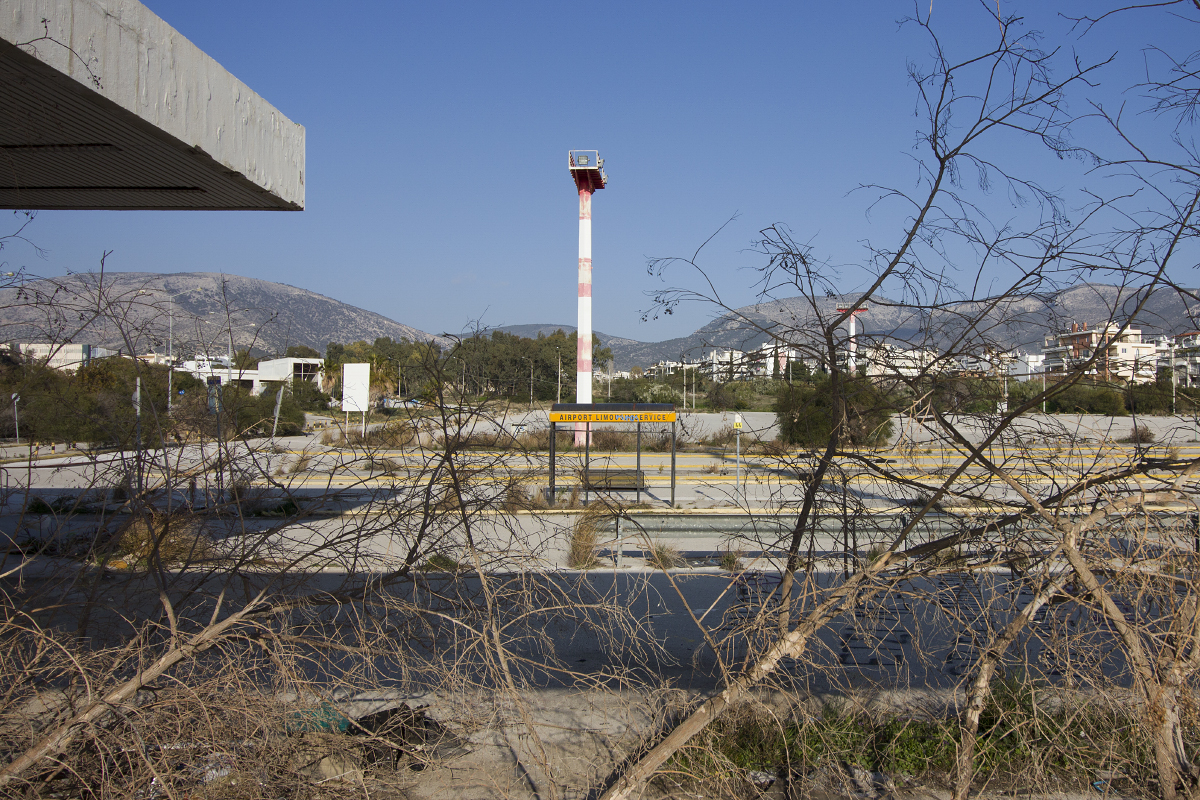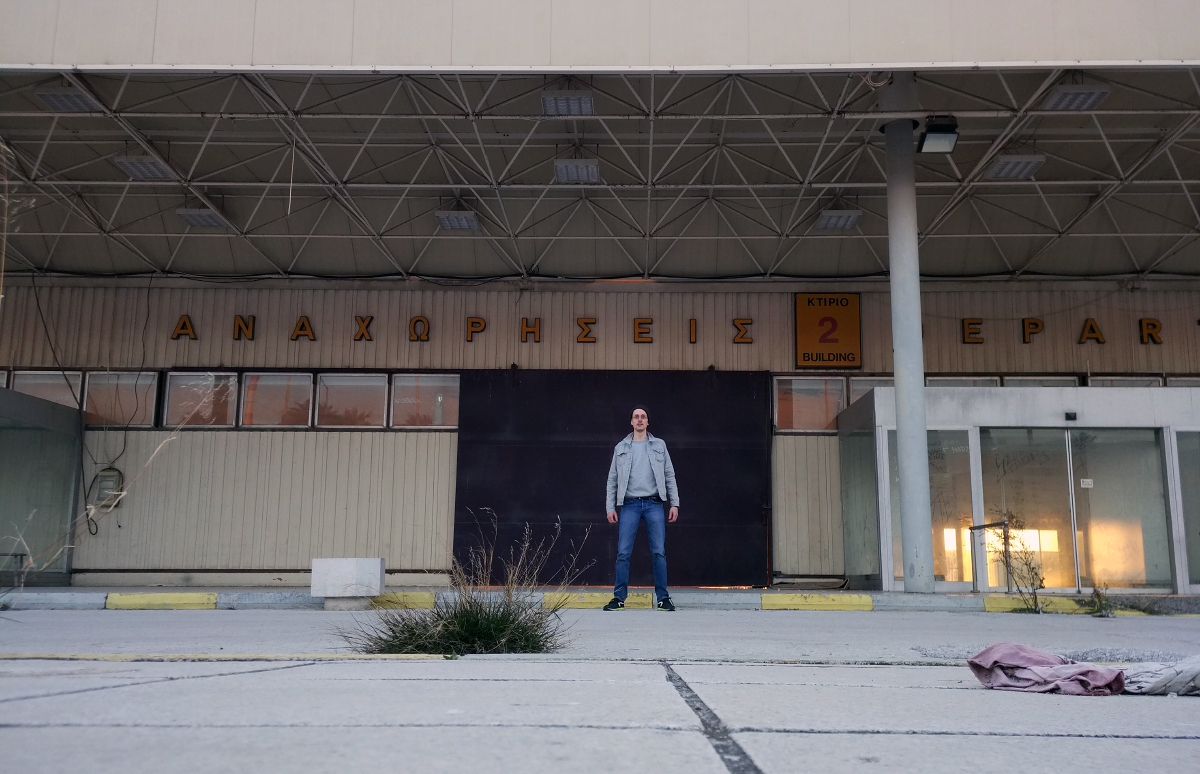During my visit to Athens 2 weeks ago, I decided to head to the south of the city to the old Ellinikon airport. Many things have changed since its glory days in the 1960’s and 70’s. During that period, shipping magnate Aristotle Onassis, to whom we owe the name of the airline, was running Olympic Airways. Not only he managed to make the carrier profitable, he also contributed to make it the airline’s golden era. From 2001, after operations moved to the new Eleftherios Venizelos airport, Ellinikon was abandoned, and is still standing today, half a kilometre from the sea. From what I could gather, it seemed that there were still a few abandoned aircraft sitting on the tarmac, which meant a good exploration prospect ahead!
Abandoned, but not completely…
After an underground ride and a short walk in the fresh february air, I arrived to the industrial area surrounding the airport. I didn’t know where to go exactly, so I followed a first sign, that eventually led me to Terminal A.
At the airport, time has stopped. That day, there were just a few people coming to train their driving skills or ride their bike on the huge parking lot in front of the terminal building. As I was approaching the western terminal, a guy was using the slight slope leading to the terminal to learn how to skate. There was this eerie atmosphere, like walking through a ghost town.
Surprisingly, all the building are still there since 2001. One could expect a lot more decay from a place of this magnitude abandonned for almost 20 years, but there is virtually no major degradation.


In the middle of the building, inside an entrance with automatic doors, guards have set up a little office, with a small lamp that is left on probably just to signal their presence. All the doors were locked with ridiculously tiny locks, yet the doors didn’t seem to have ever been forced. The inside is just the huge departure hall, almost empty except for the few scattered furniture.
The Athens Airport site slopes gently toward the airfield and Saarinen, the Finnish-American architect who designed the airport, used this condition to provide entrance at the second floor level, giving users the choice of mounting to the mezzanine level or descending to the departures and arrivals floor below.
Saarinen sought to further link the airport to its location through the planned use of local Pentellic marble, that was used inside the terminal and on the front of the terminal building.
Some of the windows overlooking the tarmac are broken, but apart from that, there are very few grafitti, except for a little construction at the far east end of the terminal.
Moving on
There was virtually no direct access inside that I found. The good news was, I knew already the 747 was still there by spotting it (as a tiny, tiny spot) while making the approach to ATH.
Going further along the perimeter fence through another 2 streets, there they were! Gleaming in their washed out colors in the afternoon sun, looking at the sea not far away.

A 747 with history
From this angle, the old jumbo is a sight! SX-OAB, a 747-200, was originally delivered new to Olympic Airways in 1973. It has been stored for 15 years since 2002 at Ellinikon airport.
The aircraft was involved in an incident in 1988 at JFK airprot, while on short ILS final approach. With the first officer at the controls, it entered a rain shower. According to the pilots, all forward visibility was lost, and the captain then took control of the airplane and performed a go around. Prior to the go-around, the aircraft touched down and one main landing gear truck struck an approach lighting junction box. At least one main gear tire was blown at that time. Weather conditions at the time included gusty winds and a slight wind shear. The aircraft landed safely and the crew was unaware that they had touched down short and to the right of the overrun. Several components on the underside of the aircraft were damaged by tire fragments (source NTSB).
In january 1998, on Olympic Airways Flight 417 from Cairo to New York City via Athens, a passenger suffering from recurrent anaphylactic reactions died following exposure to secondhand smoke, after the the flight crew didn’t manage to move him away from the smoking area.
Ghost museum?
At the very end of the tarmac lies this old Hellenic Bac 111, a pretty rare sight.
Apparently, the small building behind the aircraft is part of the Olympic Air Museum, but I couldn’t find any information about how to access it.
According to GTP Headlines, an urban regeneration project should begin in 2018, which would transform the former airport into a metropolitan park including hotels, shopping centers, open-air cultural venues and a casino. Let’s see what the future reserves for the airport…
Til next time!








